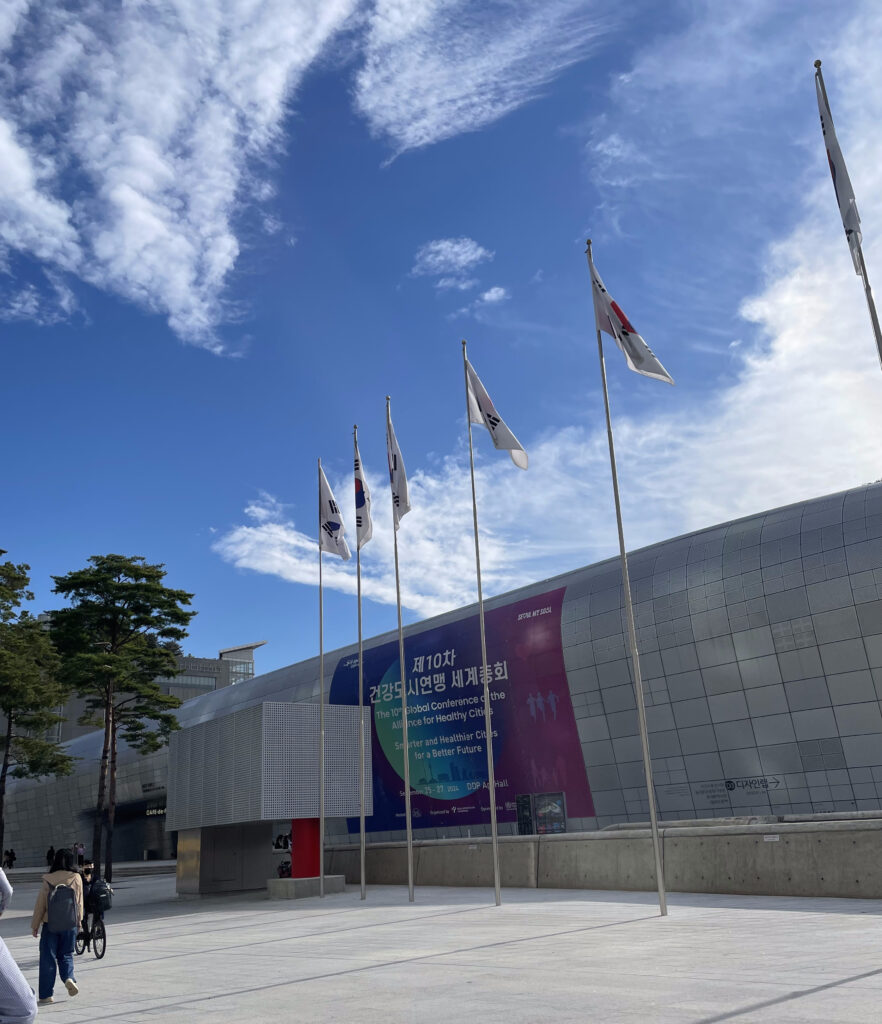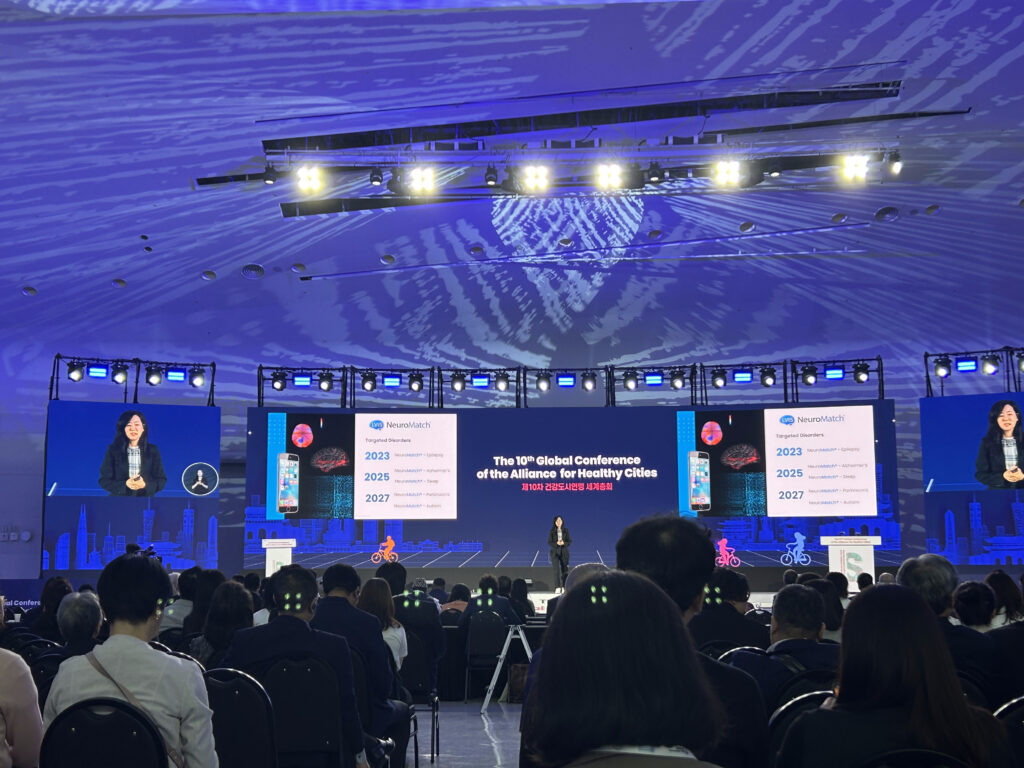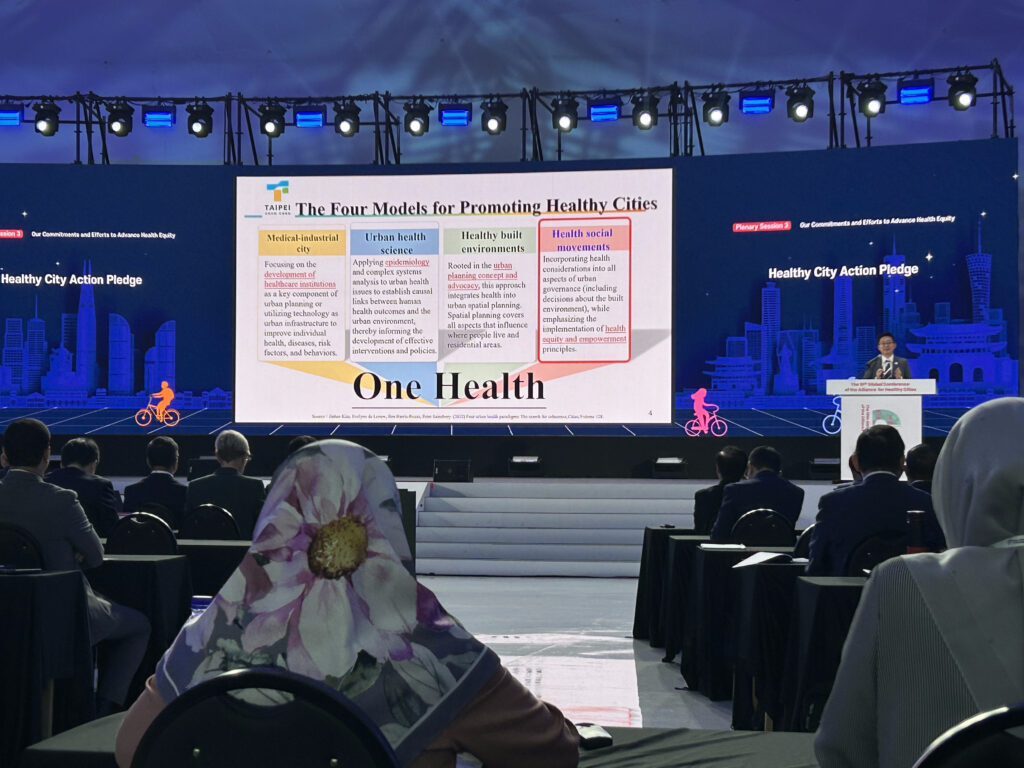From 25th to 27th September 2024, the World Health Organization (WHO) held the 10th Global Conference of the Alliance for Healthy Cities in Seoul, South Korea. Bringing together global thought leaders and a diverse group of participants, including policymakers, researchers, urban planners and public health professionals, the conference was a platform for people who are committed to advancing health and well-being in and of cities to share ideas and knowledge. The conference highlighted the intersection of health and urban development, and emphasized the urgent need for multi-sectoral and multi-stakeholder collaboration to prioritize both people and planetary health.

Building a Blueprint for Smarter and Healthier Cities
A major theme of the conference was the role of technology in shaping healthier cities. From telemedicine to data-driven public health interventions, presentations from the conference demonstrated how digitalization has (re)shaped how cities manage healthcare systems, resources and outcomes. Importantly, speakers reiterated that while technological advancements will bring about improvements in healthcare outcomes in the foreseeable future viz personalized interventions and enhanced healthcare infrastructure, challenges relating to privacy and data protection, as well as improving the digital literacy of the citizenry, will be key challenges that must be addressed to harness the full potential of technological developments. Additionally, the audience was also warned about our over-reliance on technology, and speakers asserted that technology should complement, and nod replace, human-centered health systems and services.
At the end of the day, societies and governments must realize that digital technology is not our sole solution to creating smarter and healthier cities; it is only through the intentional design of user-centric systems, complemented with policies and programmes to promote the citizenry’s digital literacy, that will encourage individuals to take ownership of their health, to create smarter and healthier cities.

Creating Sustainable and Resilient Healthy Cities for our Future
Another key focal point of the conference was the need to foster/cultivate resilient urban environments. As cities grow and face new challenges from climate change to pandemics, building resilience in public health systems has become more critical and crucial than ever. Speakers concurred that the current climate crisis is not only an environmental challenge, but a significant public health threat, as climate change has detrimental consequences for human health outcomes. This argument was corroborated with case studies of the rise of dengue, zika, and other zoonotic diseases in cities where such diseases were once non-existent.
What was prominent from the conference was how climate resilience is increasingly being integrated into policy, such as in terms of water and air quality management, and disaster preparedness. Additionally, it was also heartwarming to note that many cities and island states have been underscoring the importance of community-led and -based interventions to mitigate the impacts of climate change and the associated health risks. These moves show that we can, and should leverage on existing resources and networks to tackle the climate crisis and to minimize public health risks.
As a speaker mentioned during the plenary session, there is no healthy community on a sick planet. It is thus of utmost importance that cities work together with their communities to secure the health and well-being of their environment and people.

Achieving Health Equity in Cities
The conference also underscored the importance of equity in health access within cities. Discussions focused on how marginalized communities, often the most vulnerable in urban settings, can be better integrated into health strategies. From affordable healthcare access to designing cities that cater to all, inclusivity was a major theme.
A significant focus of the conference was on addressing the needs of older people in urban settings. The importance of urban planning in fostering both physical and social environments where older people can age with dignity and independence was highlighted, and discussions on WHO’s framework on age-friendly environments reiterated that health is not simply an outcome of our healthcare systems. Rather, it is important to go beyond health and to address social determinants of health such as housing, education and employment, as these factors also heavily influence older people’s well-being.
For cities to be truly health-promoting, speakers emphasized that urban planners must consider how social determinants of health inextricably interact and shape the environments that we live in, and how such interactions result in varied health outcomes. Only by paying attention to such pathways can progress towards achieving greater health equity be addressed, not only for older people and marginalised communities, but for all who live in cities.

Looking Ahead
A common topic that cut across all themes and plenary sessions was the need for multi-stakeholder and multi-sectoral collaboration. As cities comprise diverse and interconnected systems such as housing, transportation, and healthcare, solutions to solve urban challenges must be multi-faceted. Expanding further on this idea, the notion of ‘health in all places’ was introduced, whereby a call to change existing economic systems and political structures to one that supports health and well-being was proposed. According to this concept, health outcomes should not be left as an afterthought of economic and political systems, but should be prioritized and placed at the forefront of policies. It was fascinating to see the interplay between policy and practice, and a ‘health in all places’ approach seems promising to developing governing structures and policies that will prioritize the health and well-being of the citizenry.
As the future of healthy cities depend on multi-sectoral collaboration, community involvement and constant innovation, cities must continue to evolve, not only in terms of infrastructure and technology, but also in terms of how they engage with people living and working in cities. This is necessary to ensure that no one is left behind in the pursuit of a healthier society, city and planet.


